Mapping for the Continuous Phonetic Based Input Method
The following figures show the existing mappings from English to the phonetic equivalent characters in the target Indic scripts. Use these illustrations as a reference until you know all the mappings for the script that you use. Mappings given here are intuitive, so you should be able to input most of the characters without looking up the illustration.
Note –
In these mappings, special characters such as ‘.’ and ‘|’ included as part of the mapping are escaped with a ‘\’ character. If not escaped, the ‘|’ character acts as a separator when more than one token represents the same UTF-8 character.
Figure 4–1, Figure 4–2, and Figure 4–3 show the English to Bengali mappings for consonants, vowels, and others.
Figure 4–1 Map for Bengali Consonants

Figure 4–2 Map for Bengali Vowels
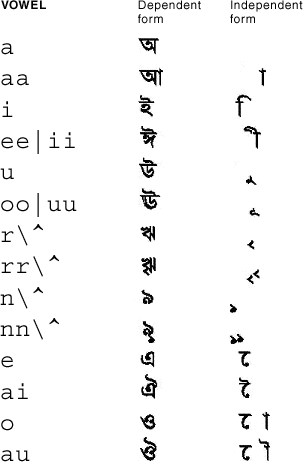
Figure 4–3 Map for Bengali Others
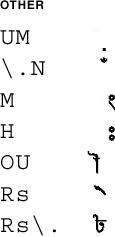
Figure 4–4, Figure 4–5, and Figure 4–6 show the English to Gujarati mappings for consonants, vowels, and others.
Figure 4–4 Map for Gujarati Consonants
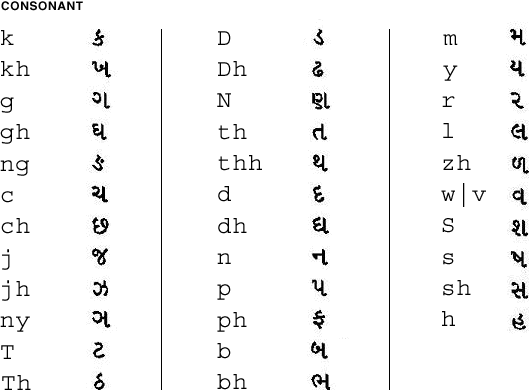
Figure 4–5 Map for Gujarati Vowels
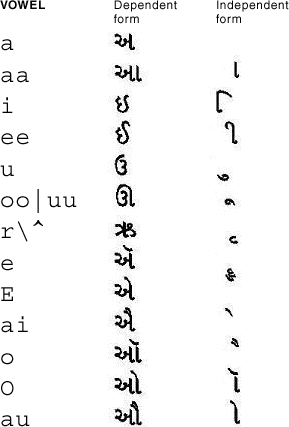
Figure 4–6 Map for Gujarati Others
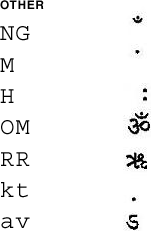
Figure 4–7, Figure 4–8, and Figure 4–9 show the English to Gurmukhi mappings for consonants, vowels, and others.
Figure 4–7 Map for Gurmukhi Consonants
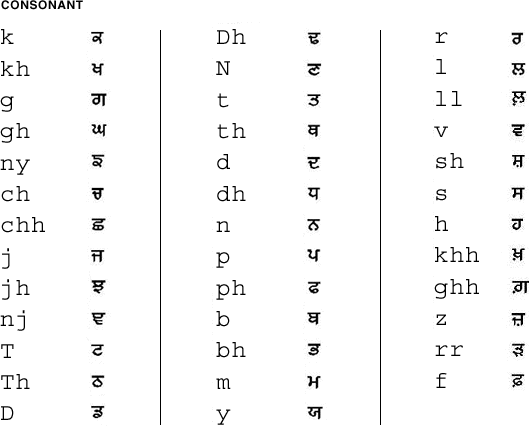
Figure 4–8 Map for Gurmukhi Vowels

Figure 4–9 Map for Gurmukhi Others

Figure 4–10, Figure 4–11, and Figure 4–12 show the English to Hindi mappings for consonants, vowels, and others.
Figure 4–10 Map for Hindi Consonants
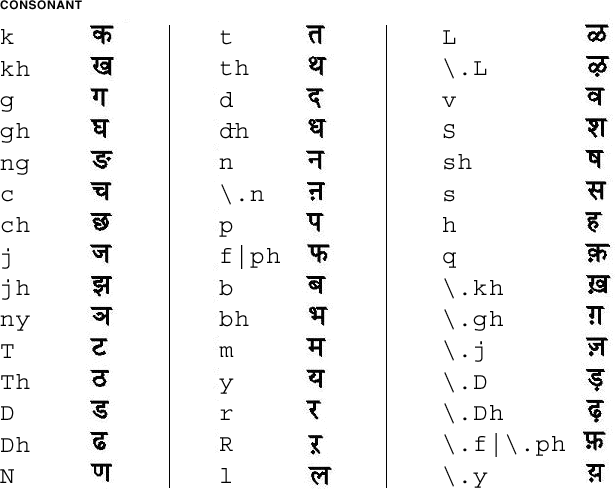
Figure 4–11 Map for Hindi Vowels
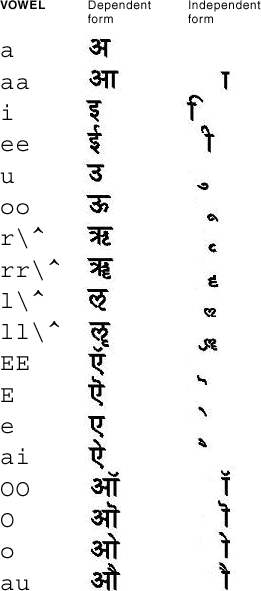
Figure 4–12 Map for Hindi Others
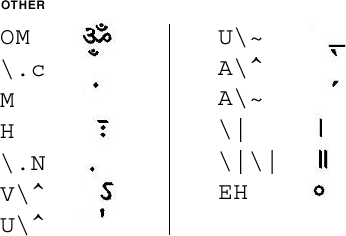
Figure 4–13, Figure 4–14, and Figure 4–15 show the English to Kannada mappings for consonants, vowels, and others.
Figure 4–13 Map for Kannada Consonants
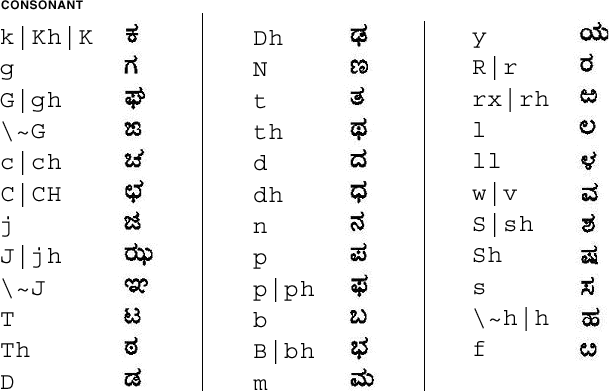
Figure 4–14 Map for Kannada Vowels
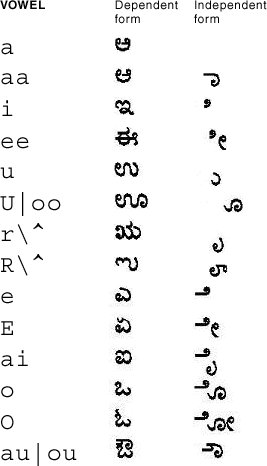
Figure 4–15 Map for Kannada Others
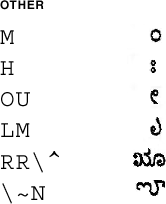
Figure 4–16, Figure 4–17, and Figure 4–18 show the English to Malayalam mappings for consonants, vowels, and others.
Figure 4–16 Map for Malayalam Consonants
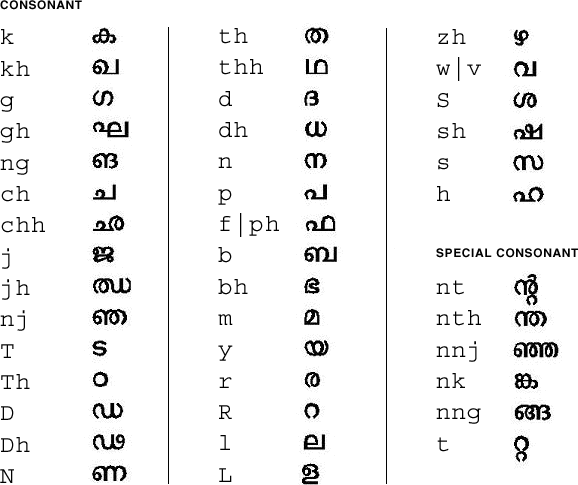
Figure 4–17 Map for Malayalam Vowels
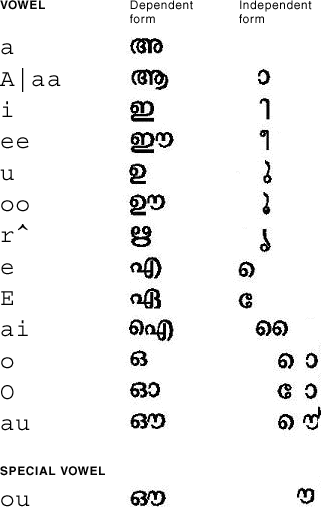
Figure 4–18 Map for Malayalam Others
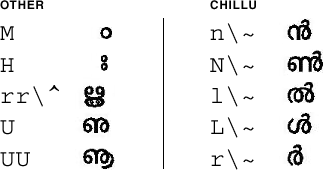
Figure 4–19 and Figure 4–20 show the English to Tamil mappings for consonants and vowels.
Figure 4–19 Map for Tamil Consonants
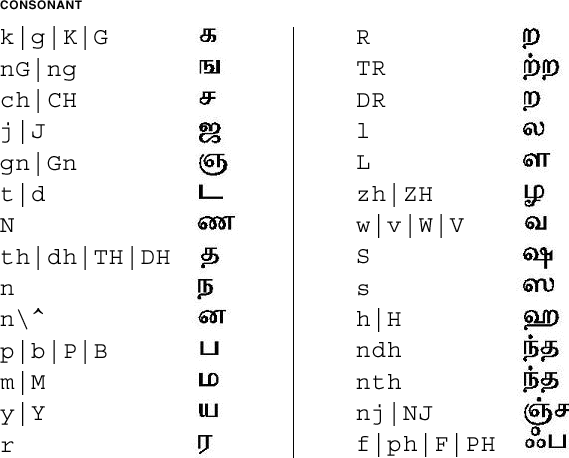
Figure 4–20 Map for Tamil Vowels
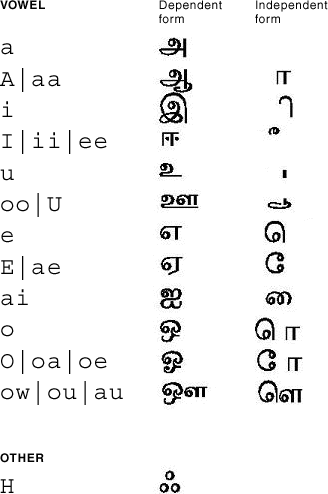
Figure 4–21,Figure 4–22, and Figure 4–23 show the English to Telugu mappings for consonants, vowels, and others.
Figure 4–21 Map for Telugu Consonants

Figure 4–22 Map for Telugu Vowels

Figure 4–23 Map for Telugu Others

- © 2010, Oracle Corporation and/or its affiliates
